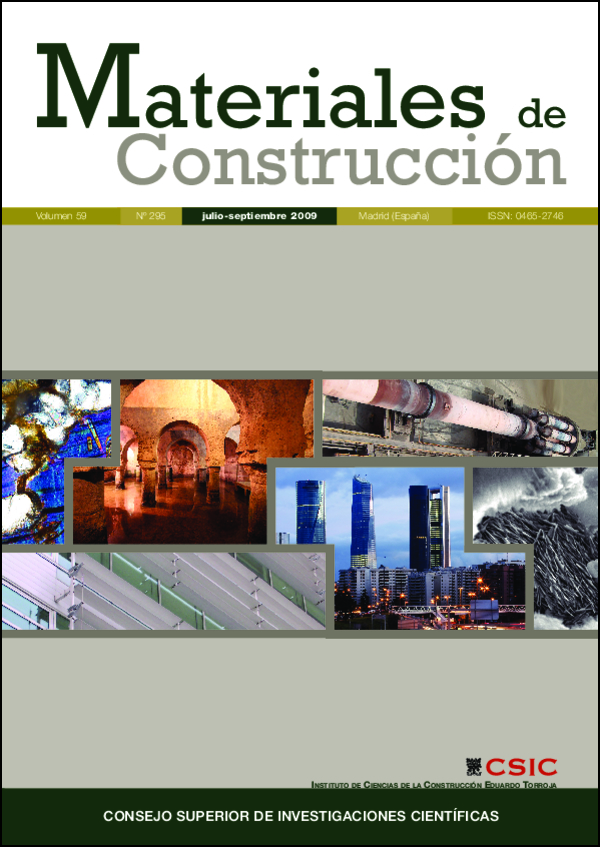Experimental study comparing the behaviour of steel truss plates and birch plywood inserts in ridge joints on glued laminated rafters
DOI:
https://doi.org/10.3989/mc.2009.44407Keywords:
laminated timber, mechanical joints, steel fittings, plywood, flexural strenghtAbstract
The present paper reports on an analysis of the mechanical performance of two flat joining systems used in roof members made of glued laminated timber.
Six pairs of laminated timber rafters for a double-pitched roof with a 100x180-mm cross-section, a 6.00-m span and a height of 1.00 m were subjected to full-scale four-point bending. In three of the specimens the rafters were joined at the ridge with a birch plywood insert, while in the other three the connection was secured with a fitting consisting in a standard flat steel truss plate. The objective pursued was to evaluate the possibility of replacing the steel fittings with birch plywood inserts. The approach adopted to reach this objective was to compare the strength of the two joint pieces and the deformation generated in the overall structure during strength tests.
The results proved to be highly satisfactory in terms of both the bearing capacity and the stiffness of the structures tested.
Downloads
References
(1) Arriaga, F.; Argüelles, R.: “Estructuras de Madera. Diseño y cálculo”. AITIM (2000).
(2) Ross, P.; O. Arup.: “Appraisal and repair of timber structures”. ASCE. Thomas Telford Ltd. (2002).
(3) Harada, M.; Hayashi, T.; Karube, M.; Lida A.; Komatsu, K.: “Static loading tests of glued laminated timber joints with drift pins. –The effect of MOE on anisotropy of mechanical property. Joints in timber structures”. RILEM proceedings pro022 (2001).
(4) Branco, J.; Cruz, P.; Piazza, M.; Varum, H.: “Experimental analysis of original and strengthened traditional timber connections”. 9th World Conference on Timber Engineering. Portland (2006).
(5) Manual del contrachapado Finlandés. WISA, Lahtí. Finlandia (2006).
(6) EN 789:04. “Timber structures - Test methods - Determination of mechanical properties of wood based panels”. CEN/TC 124 (2004).
(7) UNE-EN 595:96. “Estructuras de madera. Ensayo para la determinación de la resistencia y rigidez de las cerchas” (1996).
(8) EN 1995-1-1. “Eurocode 5: Design of timber structures. Part 1-1: General-Common rules and rules for buildings” (2004).
(9) CTE-DB SE-M. “Código Técnico de la Edificación. Documento Básico de Seguridad Estructural: Madera”. Libro 6. Ministerio de Vivienda (2006).
(10) UNE-EN 385:02. “Empalmes por unión dentada en madera estructural. Especificaciones y requisitos mínimos de fabricación” (2002).
Downloads
Published
How to Cite
Issue
Section
License
Copyright (c) 2009 Consejo Superior de Investigaciones Científicas (CSIC)

This work is licensed under a Creative Commons Attribution 4.0 International License.
© CSIC. Manuscripts published in both the print and online versions of this journal are the property of the Consejo Superior de Investigaciones Científicas, and quoting this source is a requirement for any partial or full reproduction.
All contents of this electronic edition, except where otherwise noted, are distributed under a Creative Commons Attribution 4.0 International (CC BY 4.0) licence. You may read the basic information and the legal text of the licence. The indication of the CC BY 4.0 licence must be expressly stated in this way when necessary.
Self-archiving in repositories, personal webpages or similar, of any version other than the final version of the work produced by the publisher, is not allowed.
















